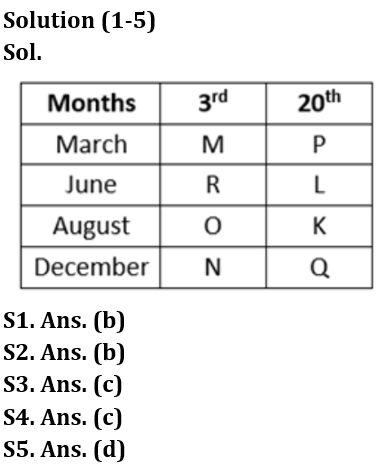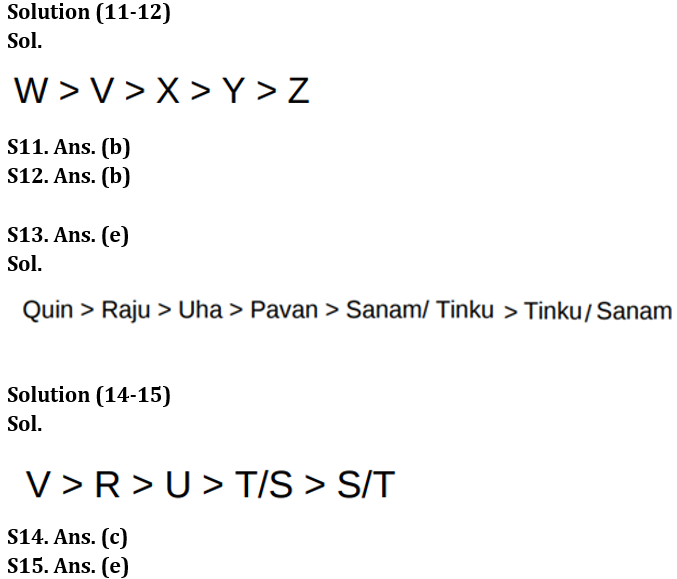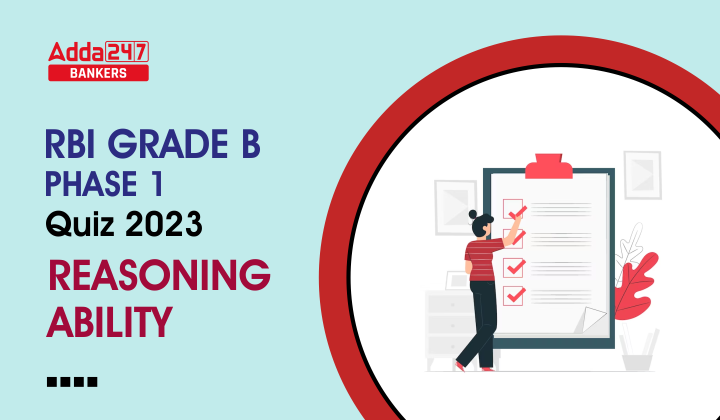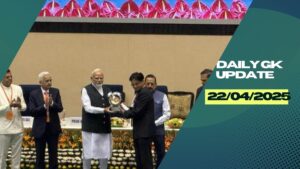Direction (1-5): Read the following information carefully and answer the given questions.
Eight people i.e., K, L, M, N, O, P, Q and R have meeting on two different dates i.e. 3rd and 20th of March, June, August, and December of the same year but not necessarily in the same order. L has meeting in the month having less than 31 days. Three people have a meeting between L and Q. The number of people who have a meeting after Q is the same as the number of people who have a meeting before M. One person has a meeting between M and R. Two people have meeting between R and K. P has a meeting before N. Minimum three people have a meeting between P and N.
Q1. How many people have meeting between M and L?
(a) Three
(b) Two
(c) None
(d) One
(e) None of these
Q2. Who among the following has meeting on 3rd August?
(a) N
(b) O
(c) K
(d) L
(e) None of these
Q3. How many people have meeting after P?
(a) Five
(b) Seven
(c) Six
(d) Four
(e) None of these
Q4. K has meeting on which among the following date?
(a) 3rd March
(b) 3rd August
(c) 20th August
(d) 20th June
(e) None of these
Q5. If N and R interchange their positions then how many people have meeting between N and Q?
(a) Three
(b) Five
(c) Two
(d) Four
(e) None of these
Direction (6-10): In the following questions assuming the given statement to be true, find which of the conclusion(s) among given conclusions is/are definitely true and then give your answers accordingly.
Q6. Statement: F ≥ G ≥ Y; Q > A > S; Y = U > I; S = D ≤ F
Conclusion: I. F > I
II. Q > U
(a) Only I is true
(b) Only II is true
(c) Either I or II is true
(d) Neither I nor II is true
(e) Both I and II are true
Q7. Statement: H ≥ G ≥ V; M ≤ L < K; N = B > H; K = J ≥ N
Conclusion: I. V < K
II. J ≤ M
(a) Only I is true
(b) Only II is true
(c) Either I or II is true
(d) Neither I nor II is true
(e) Both I and II are true
Q8. Statement: H = J ≥ M; D ≤ C = V; G < B = N ≤ H; V > F = G
Conclusion: I. C > N
II. J > F
(a) Only I is true
(b) Only II is true
(c) Either I or II is true
(d) Neither I nor II is true
(e) Both I and II are true
Q9. Statement: G > Y; E ≤ S = D; F > T = G; D ≤ R = F
Conclusion: I. Y < R
II. R ≥ E
(a) Only I is true
(b) Only II is true
(c) Either I or II is true
(d) Neither I nor II is true
(e) Both I and II are true
Q10. Statements: N ≥ M < V, P ≤ L ≥ K = N, V ≤ C = X ≥ S
Conclusions: I. L ≥ M
II. M < X
(a) Only I is true
(b) Only II is true
(c) Either I or II is true
(d) Neither I nor II is true
(e) Both I and II are true
Direction (11-12): Read the following information carefully to answer the questions based on it.
Five persons got different marks. V got less marks than W. X got less marks than V but more marks than Y. Z got the lowest marks among all.
Q11. Who got the highest marks among all?
(a) V
(b) W
(c) X
(d) Y
(e) Cannot be determined
Q12. According to marks, who is exactly in the middle?
(a) Y
(b) X
(c) W
(d) V
(e) Cannot be determined
Q13. Pavan, Quin, Raju, Sanam, Tinku and Uha, have different number of biscuits but not necessarily in the same order. Pavan has more Biscuits than only Sanam and Tinku both but less than that of Quin. Raju has more biscuits than Uha but less than Quin. Who among them have least number of biscuits?
(a) Raju
(b) Sanam
(c) Tinku
(d) Quin
(e) Either Sanam or Tinku
Direction (14-15): Read the following information carefully to answer the questions based on it.
Five friends- R, S, T, U, and V are going to play cricket and have different heights but not necessarily in the same order. U is shorter than R but taller than S. V is taller than R. U is taller than T.
Q14. Who among them is the tallest?
(a) T
(b) R
(c) V
(d) S
(e) None of these
Q15. Who among them is the shortest?
(a) R
(b) U
(c) S
(d) T
(e) Can’t be determined
Solutions

Solution (6-10)
S6. Ans. (a)
Sol.
I. F > I – True
II. Q > U – False
S7. Ans. (a)
Sol.
I. V < K – True
II. J ≤ M – False
S8. Ans. (b)
Sol.
I. C > N – False
II. J > F – True
S9. Ans. (e)
Sol.
I. Y < R – True
II. R ≥ E – True
S10. Ans. (e)
Sol.
I. L ≥ M – True
II. M < X – True






 GA Capsule for SBI Clerk Mains 2025, Dow...
GA Capsule for SBI Clerk Mains 2025, Dow...
 The Hindu Review October 2022: Download ...
The Hindu Review October 2022: Download ...
 Daily Current Affairs 22nd April 2025, I...
Daily Current Affairs 22nd April 2025, I...





